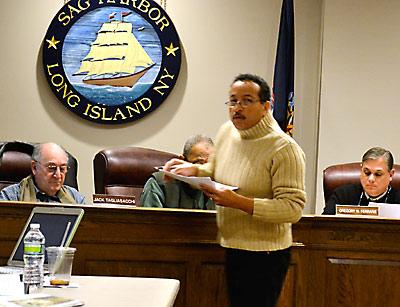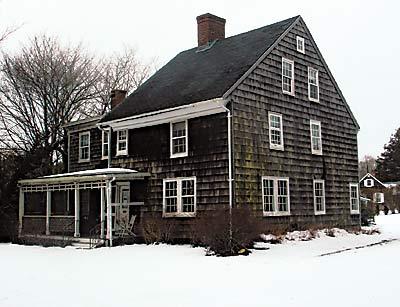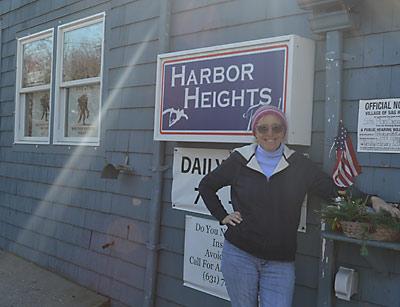Few Questions on Harbor Heights Plans
Few Questions on Harbor Heights Plans

A proposal to demolish the 1,874-square-foot Harbor Heights service station building in Sag Harbor and build a convenience store in its place, while also expanding the auto repair garage and replacing the gas pumps there, was open for public discussion at the Sag Harbor Village Planning Board’s meeting on Tuesday evening.
Petroleum Ventures L.L.C.’s proposal for the property also calls for new curb cuts along Route 114, improved drainage, new landscaping and lighting, a new septic system, and formalizing the parking area and pedestrian access.
Richard Warren, the village’s environmental planning consultant, made it clear from the start that the hearing was to gather public input on the application’s environmental impact, and was “not a pep rally” for or against it.
He detailed the issues that the zoning board of appeals had asked the applicant to address, including the project’s impact on water quality, aesthetics, neighborhood character, and traffic.
A handful of people were in attendance, but only one member of the public commented. Michael Butler, who owns a house perpendicular to the applicant’s property, submitted aerial photos to the board, and said that a Dumpster planned for the southwest corner of the Harbor Heights lot is right behind his property. “I would prefer that the Dumpster be relocated so that it doesn’t impact my property,” he said. With no further public comment, the public hearing was adjourned until the Feb. 28 meeting.
Another application discussed at the meeting was Danny Cheng’s request to change the use of a retail clothing store at 2 Main Street to a retail store for the sale of yogurt. Having received the Suffolk County Department of Health’s approval, the board agreed that the change of use would not increase wastewater, sanitary flow, or parking, and the application was approved with no requirement of a site plan.
Sen restaurant’s proposal for a 550- square-foot addition to its kitchen, and to reconfigure a bathroom and the bar area, was also addressed. The board questioned whether the renovation would require additional parking, or would create additional seating in the restaurant. The applicant’s desire to also renovate the second and third floor apartments led to the board’s request for an amended proposition.




